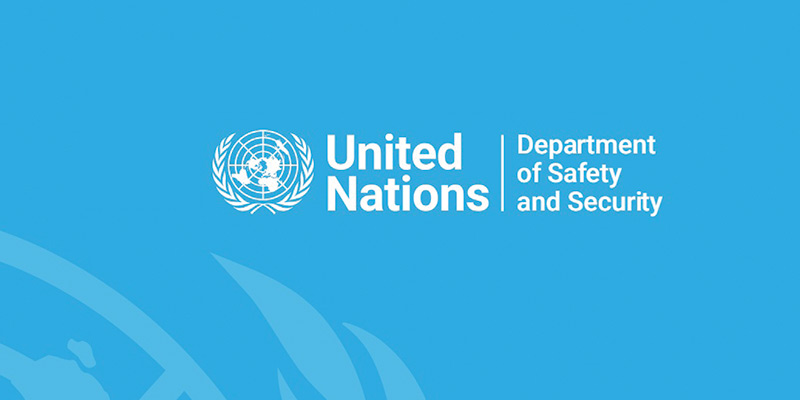- World
- May 15
Explainer - UN Department of Safety and Security (UNDSS)
• The United Nations condoled and expressed apologies to India over the killing of a former Indian Army officer, who died in war-torn Rafah in Gaza when the vehicle he was travelling in was attacked by shots fired from what it believes was an Israeli tank.
• Colonel Waibhav Anil Kale, 46, who retired from the Indian Army in 2022, joined the world body as a Security Coordination Officer in the UN Department of Safety and Security (DSS) two months ago.
• He was killed, and another DSS staffer from Jordan was injured when their UN-marked vehicle was struck when they were travelling to the European Hospital in war-torn Rafah in Gaza on May 13.
• Kale, who had commanded the 11 Jammu & Kashmir Rifles in Kashmir, is the “first international casualty” for the world body since the Israel-Hamas conflict started last year.
United Nations Department of Safety and Security (UNDSS)
• The United Nations Department of Safety and Security (UNDSS) was formally established on January 1, 2005, with the aim of consolidating security coordination and protection entities within the United Nations under one Under-Secretary General for Safety and Security.
• Over the last decade, the environment in which the UN and its partners operate has become more complex, and the threats that staff face have increased in severity. The United Nations is now operating in 50 locations that are classified as high threat, compared to five in 2005.
• New trends impacting security have also emerged, from climate change and associated population movements, socio-economic downturn and political fragmentation.
• The current operating environment is unpredictable, challenging the United Nations’ ability to anticipate and respond to emergencies effectively and reach out to people in need.
• The mission of UNDSS is to help the United Nations deliver its mandates and programmes so it can reach those in need, even in the most dangerous places.
• UNDSS provides support to over 130 UN country teams as well as 17 Special Political Missions and Political Offices and 13 Peacekeeping Missions.
• It provides safe access and security management at UN headquarters in New York.
• It collaborates closely with host governments, which have the primary responsibility for protecting United Nations personnel deployed in their territory.
• UNDSS deploys teams of security advisors who seek to understand what the UN is trying to achieve, and how those goals might be impacted by security issues.
• These UNDSS advisors assess the context, identify security risks, and — along with security experts from the UN’s agencies, funds, and programmes — recommend measures that the UN can take to mitigate risks to personnel as they implement operations.
• When an emergency hits, UNDSS is called to support the UN response. Security is a prerequisite for delivering assistance and reaching those most in need. Security is an essential component to implementing programmes, achieving results and making a meaningful impact on people’s lives.
• UNDSS is primarily funded by the UN through the Regular Budget and from UN entities on a cost-share basis through the Jointly Financed Account.
Origin of UNDSS
• For the first half-century of its existence, the United Nations felt protected by its flag.
• In the early 1990s, the global security environment became more complex. The mandate of the United Nations also evolved, resulting in more UN personnel being deployed on potentially hazardous missions and humanitarian personnel deployed alongside peacekeeping military units in integrated multidisciplinary missions.
• On August 19, 2003, UN HQ at the Canal Hotel in Baghdad was attacked by a suicide bomber driving a truck filled with explosives. Tragically, 22 UN personnel and visitors were killed, including Special Representative of the UN Secretary-General to Iraq. This was the first significant targeted attack against the United Nations.
• The attacks led to a second review of the security system by the Independent Panel on the Safety and Security of UN Personnel. The Ahtisaari Panel concluded that “the current security management system is dysfunctional. It provides little guarantee of security to UN staff in Iraq or other high-risk environments and needs to be reformed”.
• Each of the major United Nations locations around the world had their own security and safety services which operated independently.
• In August 2003, independent experts recommended a strengthened and unified security management system.
• In December 2004, the General Assembly adopted Resolution that created the Department of Safety and Security, with the purpose of strengthening and unifying the UN security management system.
• The resolution mandated that the new Department be headed by an Under-Secretary-General and merged the security management component of the Office of the UN Security Coordinator and the Security and Safety Services.
Objectives of UNDSS:
i) Provide leadership and coordination of the United Nations Security Management System.
ii) Develop and maintain a professional and effective safety and security workforce.
iii) Deliver specialised safety and security services.
iv) Provide a safety and security policy framework.
v) Provide effective and risk based safety and security services.
Manorama Yearbook app is now available on Google Play Store and iOS App Store


